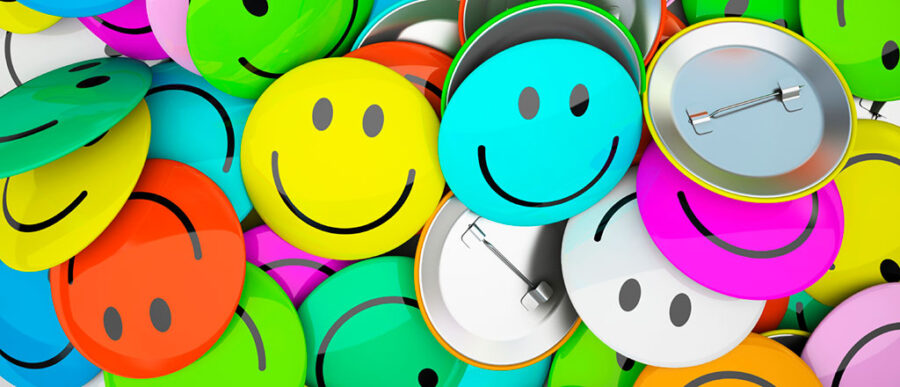When making a decision, does happiness win out over all? It’s important —even for decisions with implications that go far beyond simply achieving contentment, says Wharton operations and information management professor Alex Rees-Jones. But, as the saying goes, happiness isn’t everything. Often people knowingly forego the choice that will give them the most pleasure for one that satisfies other ideals or factors that are important to them.
In a new paper, “Can Marginal Rates of Substitution Be Inferred from Happiness Data? Evidence from Residency Choices,” Rees-Jones, Cornell University professors Daniel J. Benjamin and Ori Heffetz, and University of Michigan professor Miles S. Kimball use a watershed moment in the life medical students — “matching” with a medical residency — as a lens to examine how effectively happiness can be used to forecast decision-making.
An edited transcript of the conversation appears below.
On happiness and trade-offs:
At a very high level, we’re interested in understanding the relationship between the trade-offs people are willing to make and the trade-offs that determine their happiness. A little more practically, we’re interested in thinking about situations where you have data on what makes people happy, but you don’t have data on what people choose, and you want to try to use this happiness data to forecast things about their decision-making process.
To give you a little bit of background, there is an increasing practice in economics of trying to use happiness data to augment typical choice-based analysis. To give you a particular example, let’s say we were trying to think about how we should value a public policy and figure out how much a particular person would be willing to pay to have that public policy in place. One way of approximating this is by taking existing happiness data, estimating how policies like this affected happiness in the past, estimating how money plays into determining happiness, and then figuring out the trade-off between these two things. We can use that to basically determine the amount of money a person would be willing to pay to put that policy in place, under the assumption that choices and happiness are aligned…. That is a practice that is currently being followed by some economists, and we’re basically interested in assessing that, and trying to figure out if these two trade-offs really do reflect one another.
“If … a future medical resident is considering two options, [and] he thinks one of them will make him happier, 70% to 80% of the time that is the one he will choose.”
What med students can tell us about happiness and choice:
We ran a large-scale study of medical students as they were participating in the medical residency match. After young doctors graduate from medical school, they go through a period of several years where they get really intensive hands-on training in their specialty, which is called a medical residency. And they have to go through an elaborate process to match from their medical school to a residency. At this point you’re probably asking, well, why are we talking about medical students now? We were just talking about happiness and happiness data. The reason why we’re looking at this particular setting is because it has these really nice properties that allow us to get high-quality choice data side-by-side with high-quality happiness data.
In order to go through this matching process I just described, medical students have to go through a period of interviewing and consider really carefully the trade-offs they’re willing to make about, say, the prestige of a school versus a city location or things like this, and then determine their choice ordering over those schools and say, “This is my first choice school, this is my second choice school,” and so on and actually make a list and submit it to a centralized matching agency. That list is used to determine the final assignment of where everyone will go. The mechanism was designed very carefully to make sure that it’s in the students’ own best interests to report their preferences truthfully. We piggybacked off of that existing field mechanism [to see] their choice ordering and paired that up with excellent survey data about how happy they think they would be at these different options and the trade-offs they’re making as they’re making this decision.
To generate that happiness data, we ran a large-scale survey of medical students as they participated in the 2012 residency match. In the lead up to that residency match I contacted basically all of the medical schools in the United States, and I got 23 schools to agree to participate. At those schools, students going through the matching process were given the opportunity to participate in a web survey where they could report their top four choices. We get to see their choice ordering, and we also get to ask them, “How happy do you think you would be if you went to this residency? How happy do you think you would be if you went to this other residency?” Also, for these residencies we collected all of the features that they’re trading off when they’re making this decision — things like prestige, orhow much their spouse cares about being in a particular location, things like that.
With that data, we now have everything we need to basically put happiness data and choice data side by side and compare the analysis that you could do with each of these types of data. Our main results from this are twofold: The first is that happiness data is actually reasonably useful for forecasting choices in this setting. If you were to know that a future medical resident was considering two options, [and] that he thinks one of them will make him happier, 70% to 80% of the time that is the one he will choose.
Why happiness isn’t everything:
We know that people like to be happy— that shouldn’t be surprising. But on the other hand this is a particular setting where we don’t really think decisions are necessarily made just to be happy. No one is going to a medical residency to have fun. This is a big investment and an important decision in their lives. But even in this situation, happiness data is very useful for forecasting. So that’s a positive spin on how to use happiness data in economic settings.
There is a bit of a negative side in our data, too, and that’s the second main result. If you try to use happiness data to infer the trade-offs people are willing to make— so again like how they trade off prestige against city quality, for example— we find that the trade-offs you would estimate from happiness data are pretty dramatically different than the trade-offs you would estimate from choice data. These different factors weight very differently in determining these two things. And that’s a bit of a problem for a lot of economic analysis because for many questions economists are asking, understanding trade-offs is really the key thing. We’re trying to understand how we price various things, how we trade off one attribute of a good vs. another, things like that. And for these types of questions, happiness data is not getting us the kind of answers we need.
Overall, our main goal in this entire project was trying to get a better sense of how to use happiness data in economic applications and how far you can go with that. We found some positive results that [happiness data] are actually useful for just raw forecasting of choices. But some negative results are that [happiness data] doesn’t do a great job in answering nuanced questions about how you trade off different attributes of an option you face.
“For many questions economists are asking, understanding trade-offs is really the key thing.”
How we think about trade-offs:
One dimension where you can see differences in the way trade-offs are made across happiness data and across choice data is looking at the importance of, say, considerations about your family’s well-being or your spouse’s well-being. So if we compare how important your spouse’s happiness is in determining your choices, it’s actually dramatically more important in determining your choices than it is in determining your predictions about how happy you’ll be. If we’re thinking about trading off, say, going to a more prestigious residency in a location that your spouse likes less, you’re more likely …to weight your spouse’s opinion more heavily in your choice than you would in your forecast about how happy you’ll be in the future. So in some sense, this could be evidence that people are willing to sacrifice their own happiness to benefit their spouse in these kinds of decisions.
What the research means for marketers:
I came at this problem from the point of view of an economist, but it does have a lot of implications for how people conduct general exercises in marketing. Both economists and marketers find themselves in situations where we have lots of data about, say, customer satisfaction, happiness, things like that. And we’re trying to infer from that how people value different attributes of a product we’re trying to sell—how people make trade-offs in various economic environments. And the results I was discussing for economists translate immediately to the same kind of decisions in marketing environments.
If you’re trying to forecast what your consumers will choose or what they will like, our results suggest that happiness data can help you make those kinds of forecasts accurately. However if you’re trying to infer more nuanced questions about how, say, customers are trading off different attributes of a product you’re trying to sell, our results suggest that happiness data doesn’t really get you all the way there to estimating those kinds of trade-offs.
Misperceptions dispelled by the research:
The study speaks to countering misperceptions on two ends of a spectrum. On one end of the spectrum, some people believe that happiness is basically everything — that maximizing happiness is the ultimate goal of all of our actions. Our research suggests that, at least when we’re thinking about how happiness is currently measured in surveys and things like that, that is not the case. Happiness is something that is very important to people, and it is an important goal they’re pursuing, but people will explicitly trade off the pursuit of happiness to pursue other goals.
On the other end of the spectrum, I think some people believe that happiness is not particularly informative for economic analysis. This is a view held by many economists—that happiness is sort of a frivolous psychological variable that isn’t really fundamentally related to how we make choices. Our results actually suggest that is not quite right, either. Even in this setting that is unambiguously a very serious decision, a very important decision not made for fun by any stretch of the imagination, understanding or having access to happiness data really helps us understand how this decision process is made and helps us forecast the choices people will make.
“Happiness is something that is very important to people … but people will explicitly trade off the pursuit of happiness to pursue other goals.”
What sets the research apart:
There are a few things that set my research apart from other analysis done looking at the alignment between choice and happiness. The main thing is that we’re coming at it from a little bit of a different attitude. There is a great deal of research out there demonstrating that people don’t always choose what will make them happy. But the way that is typically discussed and the way it is typically presented is as evidence that people are making some sort of mistake, or that they’re bad at forecasting. The idea is that they’re trying to maximize their happiness, and the only thing that is stopping them is either they messed up the decision somehow, or they guessed wrong about what would make them most happy. And thus, we can attribute the entire gap between choice data and happiness data just to these missed predictions.
We were coming at it from a little bit of a different kind of basic background. We were thinking maybe missed predictions are important. But also it could be that people aren’t even necessarily trying to maximize happiness. Maybe they could just be thinking of it as one of many goals they’re pursuing and explicitly trade off that goal against other goals. And so this led us to look at a situation where people are making a decision that is very considered, very deliberated, very high-stakes, where we’re not particularly worried about mistakes driving any deviations we see. We were trying to see if there was still a wedge in that setting—and of course we saw one.
By looking in this particular type of environment, we were better able to get at how much of this wedge between choice and happiness is driven by people’s initial intentions versus just their missed predictions about what actually makes them happy.
What’s next:
In terms of what’s next, we’re thinking about continuing this line of research by continuing to investigate the relationship between happiness data and choice data, which is the more typical object in economic analysis. We want to continue to think about how much you can infer about how choices are made based only on happiness data.
A particular dimension that I’m interested in is in trying to build happiness data into a more standard price theoretic economic analysis. So rather than thinking about happiness as just a way of approximating the thing people are trying to maximize, think of it as an abstract good that people are willing to, in some sense, buy and also explicitly trade off against other goals in their life. We’re starting to work on a theoretical approach to modeling that and thinking about how we can better use that type of framework to import psychological data and happiness data into economic analysis.



